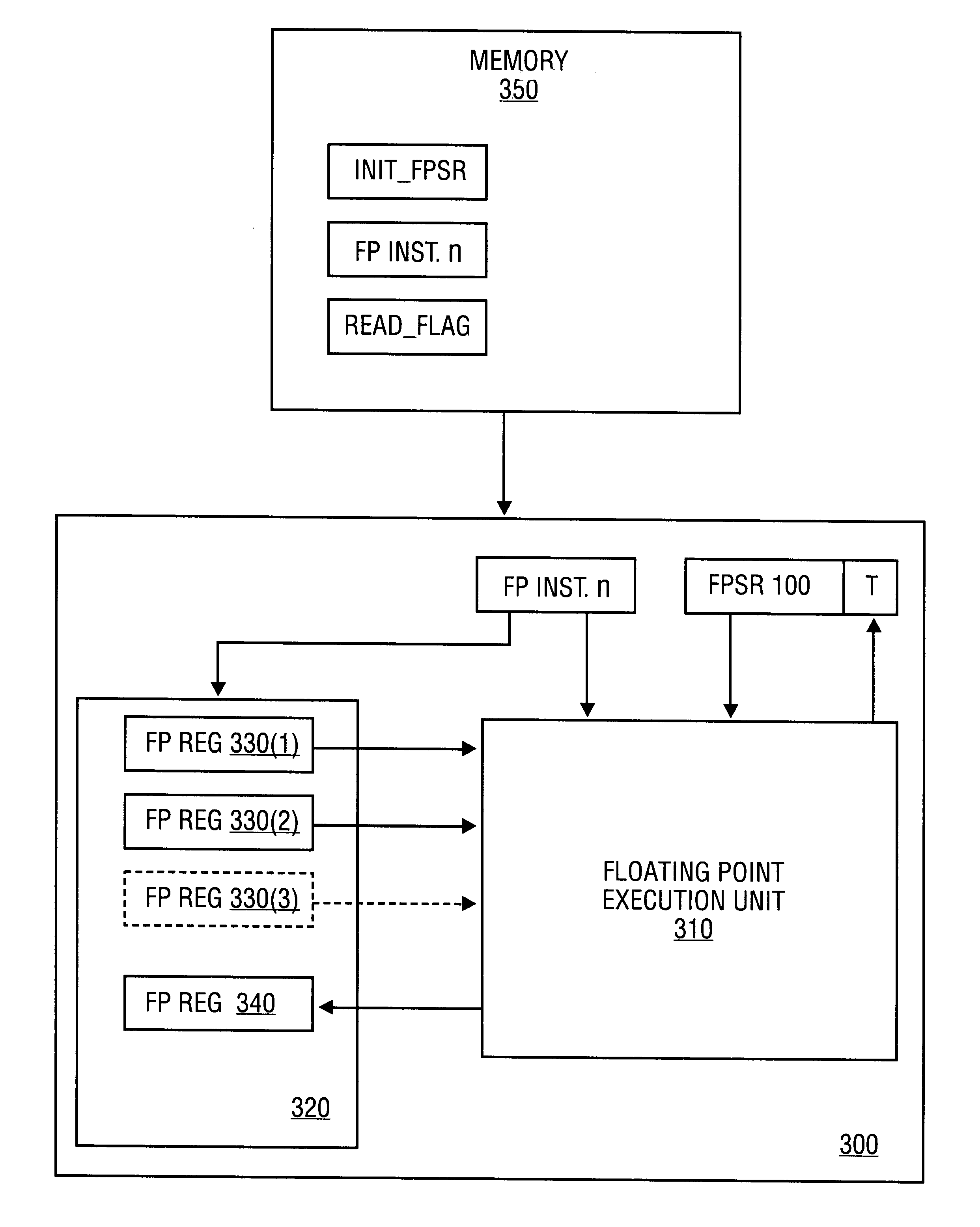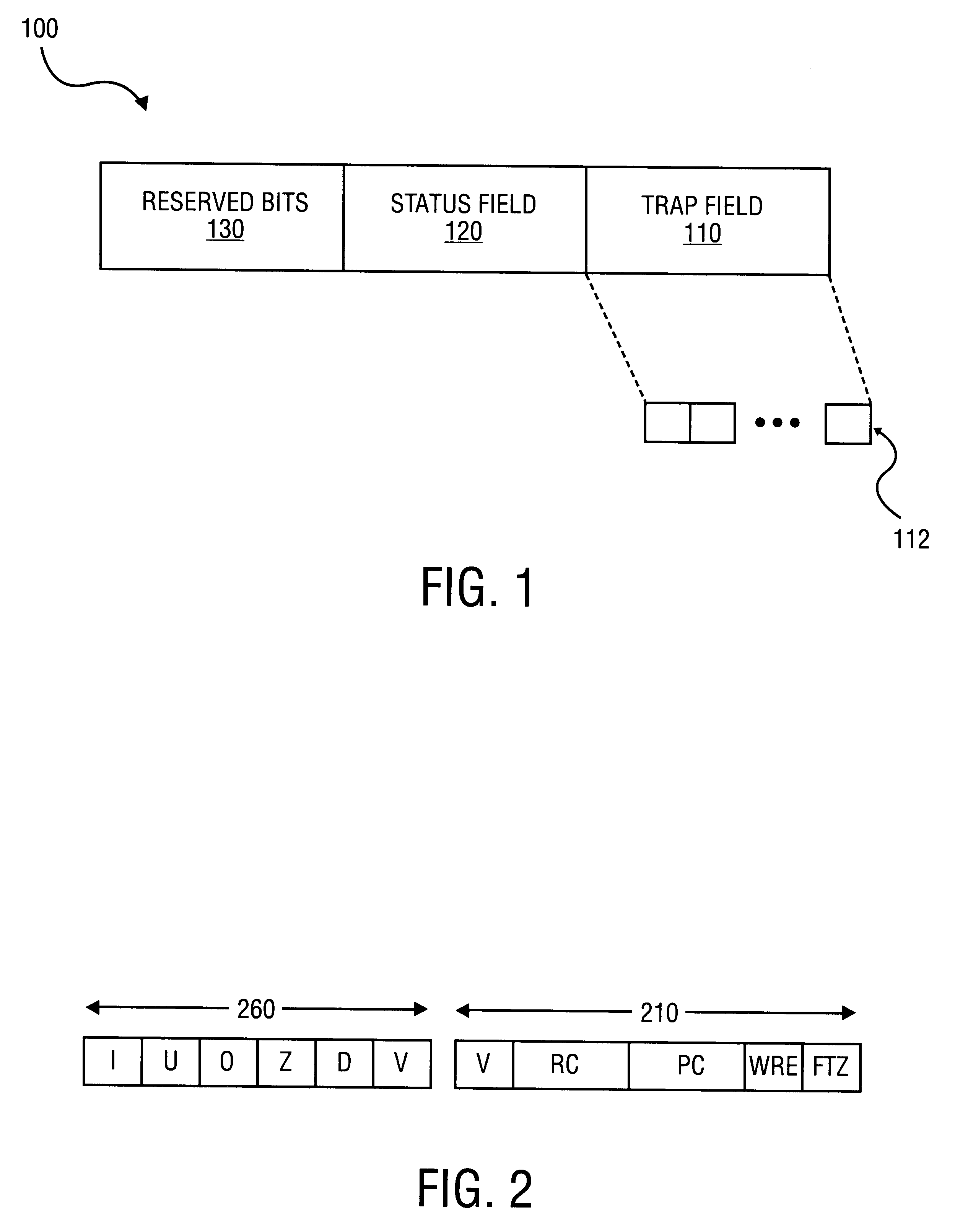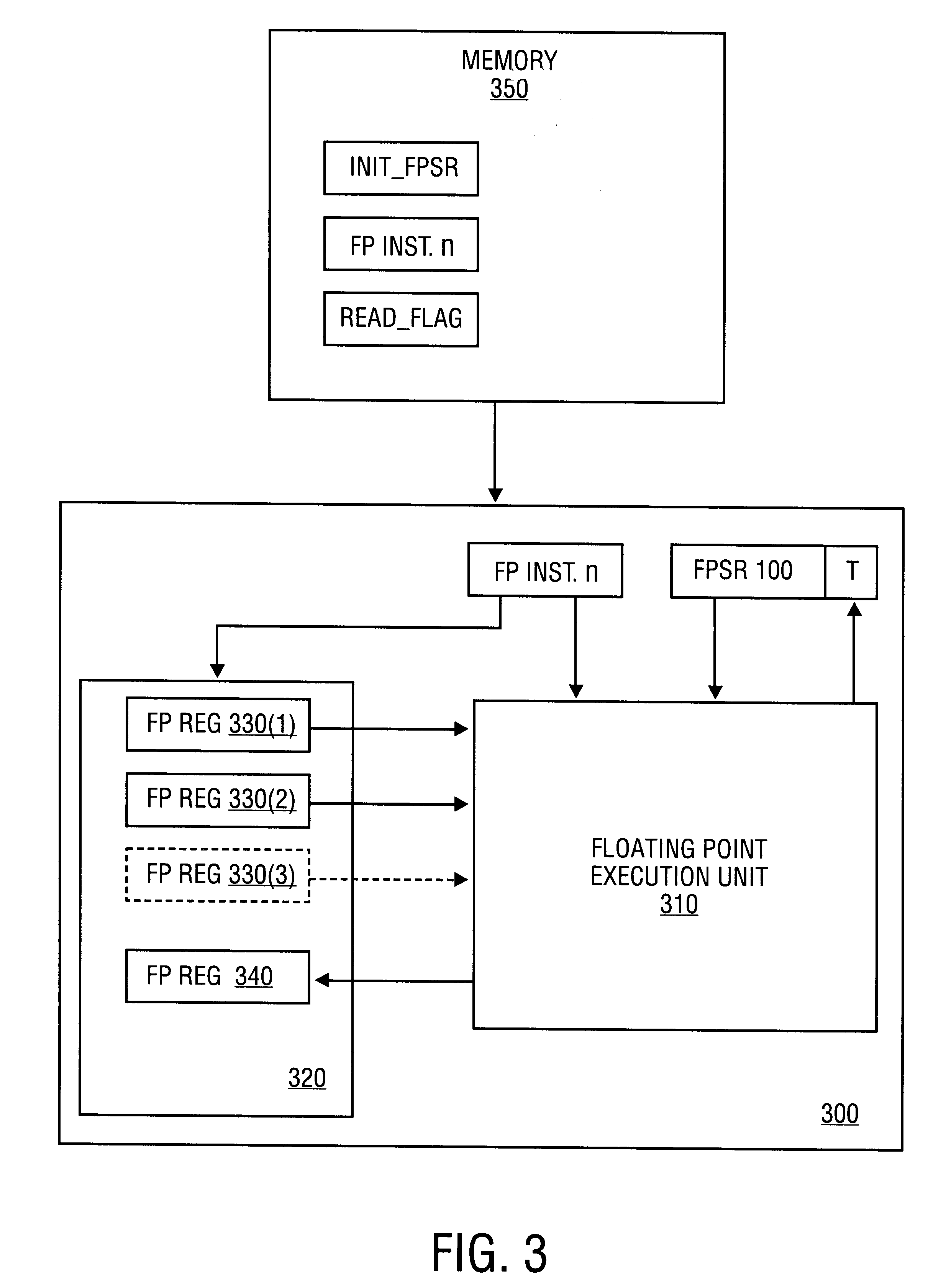Mechanism to detect IEEE underflow exceptions on speculative floating-point operations
a floating-point operation and exception detection technology, applied in the field of processors, can solve the problems of wasting resources employed to handle an exception it raises, the inability of instructions to execute, and the inability to provide instructions to execu
- Summary
- Abstract
- Description
- Claims
- Application Information
AI Technical Summary
Benefits of technology
Problems solved by technology
Method used
Image
Examples
Embodiment Construction
The following discussion sets forth numerous specific details to provide a thorough understanding of the invention. However, those of ordinary skill in the art, having the benefit of this disclosure, will appreciate that the invention may be practiced without these specific details. In addition, various well-known methods, procedures, components, and circuits have not been described in detail in order to focus attention on the features of the present invention.
The present invention is illustrated with respect to IEEE 745, but the invention is not limited to this standard. Under IEEE 745, underflow is defined with respect to "tininess" and "inexactness", and a result is tested for "tininess" after it is rounded. The result is said to be "tiny" if the result, computed as though the exponent range were unbounded, would yield a non-zero value that lies strictly between +2.sup.Exp(min) and -2.sup.Exp(min). Here, Exp(min) is the smallest exponent in a given representation. It is often imp...
PUM
 Login to View More
Login to View More Abstract
Description
Claims
Application Information
 Login to View More
Login to View More - R&D
- Intellectual Property
- Life Sciences
- Materials
- Tech Scout
- Unparalleled Data Quality
- Higher Quality Content
- 60% Fewer Hallucinations
Browse by: Latest US Patents, China's latest patents, Technical Efficacy Thesaurus, Application Domain, Technology Topic, Popular Technical Reports.
© 2025 PatSnap. All rights reserved.Legal|Privacy policy|Modern Slavery Act Transparency Statement|Sitemap|About US| Contact US: help@patsnap.com



